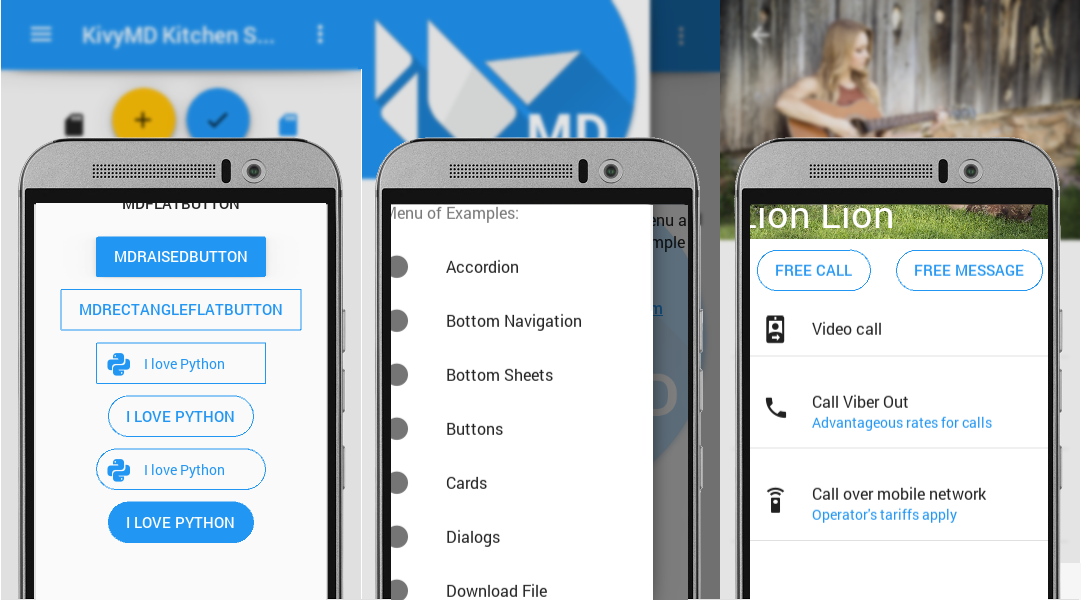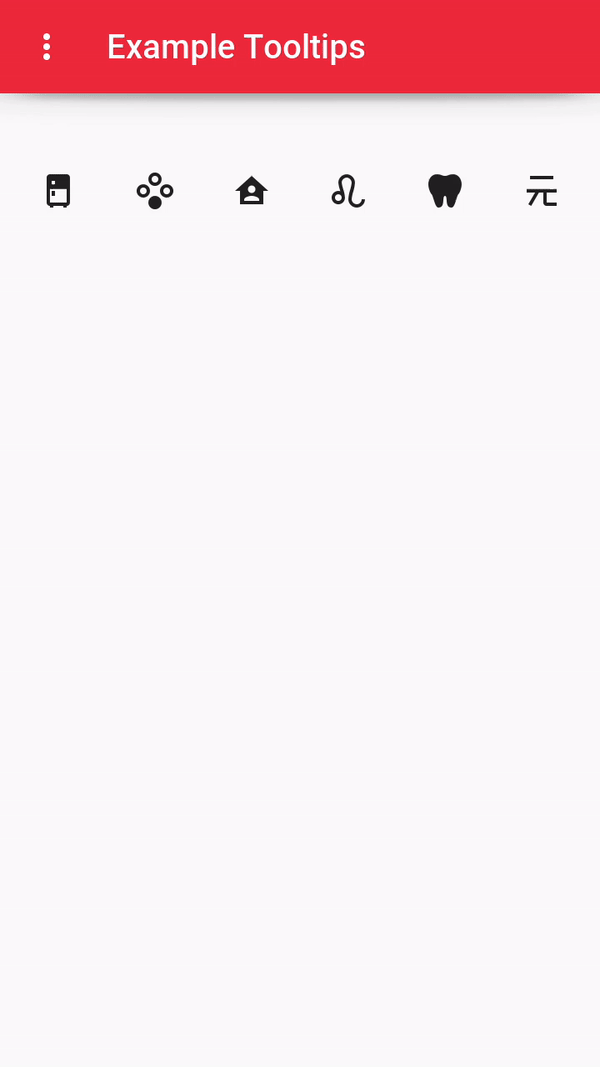
It's no secret that the scope of
Python is quite wide: from web-based technologies, the gaming industry, and ending with
NASA projects. Python works almost everywhere: from handheld computers and smartphones to network servers and on almost all well-known platforms such as
Windows, Linux / UNIX, macOS, Palm OS, Raspberry PI and so on. Thanks to the
Kivy framework
, in 2011
Python also mastered mobile platforms in terms of developing applications for
iOS and
Android , and in 2015, using the
KivyMD library
, Python learned to use
Material Design .
The
KivyMD library is a collection of widgets in the style of
Material Design , for use in the
Kivy cross-platform framework. In my previous article
KivyMD - life goes on , which was released a year ago, I already talked about fork of this library, but in
issues and in the mail I often received notifications that the features declared in the fork are not available when installing
KivyMD from
PyPi . And this was really so, because
PyPi contained an old version of the library four years ago from the
GitLab repository, which is no longer supported by the author and, since we did not want to use a new name for our fork, such as KivyMD-fork, and load the package into
PyPi with such name, it was decided to write to the author of
KivyMD Andrés Rodríguez (@mixedCase_) and ask him to remove his package. After some lengthy negotiations, Andre gave us an invite to the
Python Package , provided that he remained a co-author of the library. So now the official library repository is
here , and our latest updates are available in
PyPi .
So, what changes in the library happened a year later? Thanks to those people who use
KivyMD in their projects, we have eliminated quite a few errors. Now the repository has 81 closed questions. This is if you do not take into account the fact that the lion's share of issues is resolved in
Discord online chat user support. There are both Russian-language and English-language sections in it. Not all
Material Design specifications are currently implemented, because almost two people work on the library in their free time. What has already been implemented and what I would like to implement can be viewed
in this list . It is far from complete, but you can supplement it, as editing access is open to everyone. Here are some new widgets:
Tooltip
Material design tooltipcode examplefrom kivy.lang import Builder from kivy.factory import Factory from kivymd.app import MDApp Builder.load_string(''' #:import random random #:import hex_colormap kivy.utils.hex_colormap #:import get_color_from_hex kivy.utils.get_color_from_hex #:import md_icons kivymd.icon_definitions.md_icons #:set ICONS list(md_icons.keys()) <IconButtonTooltips@MDIconButton+MDTooltip> <ExampleTooltips@BoxLayout> orientation: 'vertical' MDToolbar: title: "Example Tooltips" md_bg_color: get_color_from_hex(hex_colormap["crimson"]) elevation: 10 left_action_items: [['dots-vertical', lambda x: None]] tooltip_text: "MDToolbar" Screen: BoxLayout: size_hint: None, None size: self.minimum_size padding: "10dp" spacing: "10dp" pos_hint: {'center_x': .5, "center_y": .9} IconButtonTooltips: icon: random.choice(ICONS) tooltip_text: "MDIconButton" IconButtonTooltips: icon: random.choice(ICONS) tooltip_text: "MDIconButton" IconButtonTooltips: icon: random.choice(ICONS) tooltip_text: "MDIconButton" IconButtonTooltips: icon: random.choice(ICONS) tooltip_text: "MDIconButton" IconButtonTooltips: icon: random.choice(ICONS) tooltip_text: "MDIconButton" IconButtonTooltips: icon: random.choice(ICONS) tooltip_text: "MDIconButton" ''') class Test(MDApp): def build(self): return Factory.ExampleTooltips() Test().run()

Bottom app bar
Material Design Bottom App BarOn the left is an example of how the
Bottom App Bar works from the
Flutter demo application, on the right is a demonstration of the
KivyMD Bottom App Bar library.
code example from kivy.factory import Factory from kivymd.app import MDApp from kivy.lang import Builder Builder.load_string( """ <BottomAppBar@Screen> BoxLayout: spacing: dp(10) orientation: 'vertical' MDToolbar: title: "Title" md_bg_color: app.theme_cls.primary_color left_action_items: [['menu', lambda x: x]] Widget: MDBottomAppBar MDToolbar: title: "Title" icon: "git" type: "bottom" left_action_items: [["menu", lambda x: x]] """ ) class BottomAppBarTest(MDApp): def build(self): return Factory.BottomAppBar() BottomAppBarTest().run()
Backdropr
Material Design BackdroprOn the left is an example of how
Backdropr works from the
Flutter demo application, on the right is a demonstration of the
Backdropr of the
KivyMD library.
We also added the
Studies section in the library, which will host demo applications such as
Shrine ,
Basil, and others. For now, you can see what the
Shrine application looks like:
And here is the same thing, but from the
Flutter application:
So
KivyMD looks on
Android devices. In some places, of course, there are performance problems, but this concerns, most likely,
Kivy itself. For example, there are still problems with starting “heavy” libraries. In the following video, I gave an example application using
OpenCV as a backend to an
Android camera:
In this particular case, nothing can be done, because at the start, not only
OpenCV and
NumPy are loaded, but also native calls occur in order to connect all this. However, a well-designed mobile application on
Kivy and
KivyMD starts pretty quickly. All this applies to mobile platforms. There are no such problems on the desktop and
KivyMD looks simply gorgeous there:
Mac OS:
Windows:
In principle, it doesn’t matter which OS it will work on, because
KivyMD , like
Kivy, looks the same everywhere. You yourself must decide what kind of application your application will have and I think this is only a plus.
We have a lot of plans, but not enough hands. For example, while there is no time to refine the file manager for desktop systems, I would like to introduce support for iOS widgets and much more ... However, despite all the shortcomings, the number of downloads and interest in the library is growing every day:
Join the community if you love Python as much as we love it!
Youtube ChannelKivyMD NewsDiscord chat